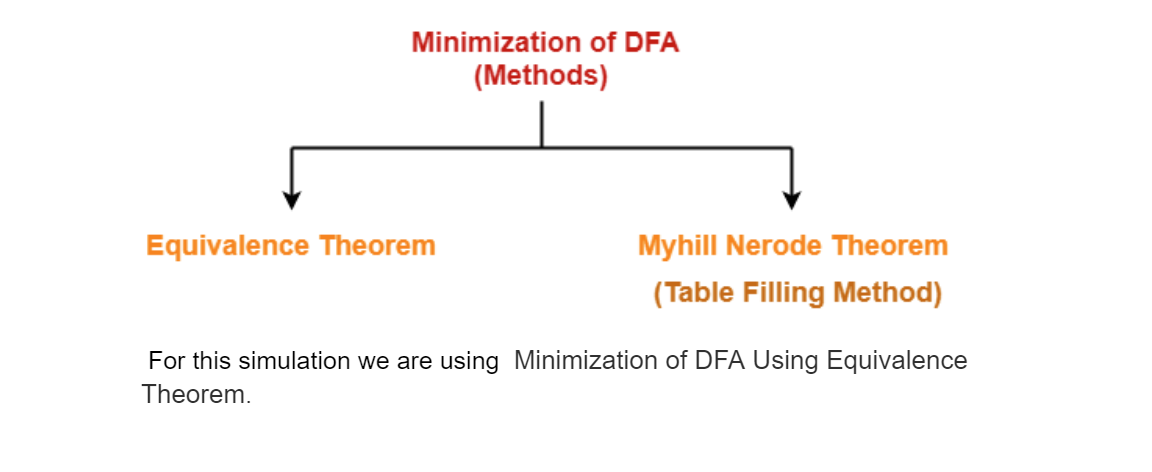Minimization of DFA
DFA minimization is the task of transforming a given deterministic finite automaton (DFA) into an equivalent DFA that has a minimum number of states. Here, two DFAs are called equivalent if they recognize the same regular language.
The two popular methods for minimising a DFA are-
1. Minimization of DFA Using Equivalence Theorem (Partition Refinement Method):
The Equivalence Theorem provides a method for minimizing a Deterministic Finite Automaton (DFA)
by identifying and merging equivalent states.
Create a table of all possible state pairs:
Construct a table where rows and columns represent all states in the original DFA.
Identify initially distinguishable states:
Start by partitioning the states of the original DFA into two groups: accepting states and non-accepting states.
This initial partition separates states based on their acceptance behaviour.
Equivalence Class Identification:
Iterate through the partitions and identify equivalence classes by analysing transitions from states within each partition.
For each input symbol, determine the destination partition for the transitions from states within the current partition.
States that lead to the same partition for a given input symbol are considered part of the same equivalence class for that input symbol.
Merge Equivalent States:
If all states within an equivalence class are equivalent for all input symbols, merge them into a single state.
This merging process reduces the number of states in the DFA while preserving language recognition.
Repeat Equivalence Class Identification:
Continue the process of identifying equivalence classes until no further identifications can be made.
At this point, all states within a partition are part of the same equivalence class for all input symbols.
Construct Minimised DFA:
Use the merged states to construct the minimised DFA.
Each merged group of states, representing an equivalence class, becomes a single state in the minimised DFA.
2. Minimization of DFA Using Table-Filling Method:
This is another common algorithm for DFA minimization, which works by marking distinguishable state pairs.
Create a state-pair table:
For each pair of states (p, q), mark them as distinguishable or not.
Initialization:
Mark all pairs where one is an accepting state and the other is not (these are clearly distinguishable).
Propagation:
For unmarked pairs, check transitions for each input symbol.
If δ(p, a) and δ(q, a) lead to distinguishable states for some input a, then mark (p, q) as distinguishable.
Repeat until stable:
Continue until no more pairs can be marked as distinguishable.
Merge unmarked pairs:
States that remain unmarked are equivalent and can be merged into one state in the minimized DFA.
Importance of DFA Minimization:
Removes redundant states from the automaton.
Makes the DFA efficient for implementation in practical applications.
Guarantees a unique, canonical DFA for the given regular language.

